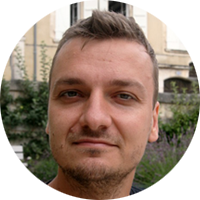CUSTOMER WEBINAR
Mono‐ and multi‐nucleated ventricular cardiomyocytes constitute a transcriptionally homogenous cell population
Cardiomyocytes are the workhorses of the heart, contracting continuously approximately 3 billion times over an average human lifetime without tiring. Individual adult ventricular cardiomyocytes are either mono- or multi-nucleated; however corresponding transcriptional signatures, reflecting potentially different functions or the ability for cell-cycle entry, are not known.
Although single-cell RNA-sequencing (scRNA-seq) has become very popular, microfluidic or droplet-based scRNA-seq methods cannot process very large cells. Thus, intact mono- and multi-nucleated cardiomyocytes cannot be studied using these approaches, because of their large size (up to 200 µm) and impossibility to separate cells based on ploidy.
In this webinar, Stefan Günther and Michail Yekelchyk from the MPI for Heart and Lung Research, will describe how they used the ICELL8 Single-Cell System to:
- Isolate intact rod-shaped cardiomyocytes from normal and hypertrophic hearts
- Distinguish between mono- and multi-nucleated cardiomyocytes
- Quality control the isolated cells to avoid misinterpretation of sequencing data
- Generate RNA-seq libraries from hundreds of selected single-cardiomyocytes and compare transcriptional signatures between mono and multi-nucleated cardiomyocytes
Meet the Speakers

Dr. Stefan Günther
Head of NGS core
MPI for Heart and Lung Research
Dr. Günther has studied biology in Halle/Saale and finished PhD at Max-Planck-Institute for Heart and Lung Research in Bad Nauheim in the group of Thomas Braun. Since 2015, he is Head of the NGS Core Facility at MPI Bad Nauheim with focus on transcriptomic analyses as well as single cell transcriptomics and epigenetics.

Michail Yekelchyk
PhD student
MPI for Heart and Lung Research
Michail Yekelchyk has studied Biophysics in Belarusian State University in Minsk from 2011 till 2016. Since 2016, he is a PhD Student in the department of Cardiac Development and Remodelling in the Max Planck Institute for Heart and Lung Research in Bad Nauheim, Germany.
